|
This month we have been focusing on the top five vitamin and mineral deficiencies that are commonly found in athletes: magnesium, calcium, vitamin D, and zinc. This is the last of the series on this week we are diving into iron. Iron deficiency is near and dear to my heart because I struggled with it for YEARS (and still do if I’m not being mindful and proactive with my iron intake). The fatigue I struggled with was no joke. I chalked it up to over-training, but even after days off, I still felt horrible. And I know I’m not alone. Endurance athletes, especially female runners, have been identified as being high risk for developing iron deficiency. A recent review from The University of Western Australia, Edith Cowan University, and the WA Institute of Sport found that up to 35 percent of female athletes are iron deficient compared to about five percent in the general female population. Male athletes were also iron deficient by approximately 11 percent compared to one percent of the general male population. Exercise can inhibit the body's ability to absorb iron which puts athletes at a higher risk for iron deficiency than those that don’t exercise regularly. This poses a large concern for athletes because iron deficiency can leave you feeling lethargic and fatigued, it can hinder your ability to recover properly from exercise and in general, it reduces your athletic performance. THUMBS DOWN to that! SIGNS OF DEFICIENCY Early onset of iron deficiency can be asymptomatic. But if left untreated, it can lead to a whole host of symptoms and even iron deficiency anemia. Iron deficiency is a condition resulting from too little iron in the body. It is the most common nutritional deficiency and the leading cause of anemia in the world. Anemia is a condition in which you do not have enough hemoglobin in your red blood cells. Hemoglobin is the protein molecule in red blood cells that is responsible for carrying adequate oxygen from the lungs to the body’s tissues and returns carbon dioxide from the tissues back to the lungs. Iron plays a role in the production of hemoglobin in the body, which explains why iron deficiency and anemia are so closely related. So if you want to breathe easy during exercise, you can see why having enough iron is important! You can also see why one of the leading symptoms of iron deficiency and iron deficiency anemia is shortness of breath. Other symptoms include:
RISK FACTORS Menstruating women are at a high risk for iron deficiency and iron deficiency anemia due to monthly blood loss. If those women also run (especially on hard surfaces, like asphalt or cement), they have an increased risk due to a condition called hemolysis. Hemolysis is the destruction of red blood cells and the shock of multiple foot strikes on hard surfaces mile after mile damages red blood cells. Vegans and vegetarians are also at high risk for iron deficiency and iron deficiency anemia. This is because the most absorbable form of iron is mostly available in animal products. What limited iron is available from plant based foods is limited in its absorption due to the phytic acid found on these foods. Soaking, sprouting and/or fermenting can help make the iron in plant foods more bioavailable. Any condition that results in blood loss can lead to iron deficiency and iron deficiency anemia, including heavy menstruation, pregnancy, frequent or excessive blood donation, fibroids, digestive tract disease (including infections), surgeries and accidents. Alcohol and aspirin abuse have also been shown to reduce iron levels in the body. TESTING The tests most commonly used to detect iron deficiency are:
A diagnosis of iron deficiency can only be made by a medical professional when a person has both low hemoglobin and hematocrit, low mean corpuscular hemoglobin (MCH) (functional ranges should be between 27.7-32), low serum ferritin and high red blood cell distribution width (RDW)(functional ranges should be between 11.7%-15%). Iron deficiency without anemia is diagnosed when a person has a normal hemoglobin, but below normal serum ferritin. It is not uncommon to see a CBC ordered on a standard annual blood panel, but no iron panel ordered. If you check your latest blood panel and you don’t see an iron panel, check your CBC for both hemoglobin and hematocrit. If one or both are low, it is in your best interested to talk to your doctor about ordering an iron panel. If you need help ordering or interpreting your blood work to see if you show signs of iron deficiency or iron deficiency anemia, reach out to me. I’m happy to review your blood panel and help point you in the right direction. You should never self-diagnose an iron deficiency. There are many reasons your iron panel can look off on paper and just taking an iron supplement without consulting a professional can result in iron overload, which is a very dangerous condition. Iron overload can cause hepatic cirrhosis, diabetes, hyperpigmentation of the skin and cardigan failure. FOOD SOURCES While I am a huge advocate of incorporating lots of plants into your meals, it has been found that those with iron deficiency should reduce their intake of all plant based foods and instead focus their meals around iron-rich foods. If you are a vegetarian due to ethical reasons, then some of the foods you can focus on to up your iron levels include:
The Recommended Dietary Allowance (RDA) of iron for all age groups of men and postmenopausal women is 8 mg/day; the RDA for premenopausal women is 18 mg/day. Here is a list of some iron rich food sources:
Additionally, the level of iron will increase in your foods if you cook them in a cast iron skillet. This is especially true for high-acid foods such as applesauce, eggs, and tomato-based recipes as these foods encourage the leaching of iron out of the pan. The greater the acidity of the food and the longer you cook it, the more iron is transferred. Generally speaking, one cup of acidic foods cooked in a cast iron pan will gain about six to eight milligrams of iron. Note that highly acidic foods, like tomatoes and citrus juices, should not be cooked in a brand new cast iron pan until the cookware has been highly seasoned. You can achieve a higher bioavailability of dietary iron by increasing the content of food components that enhance iron absorption, such as ascorbic acid, and by decreasing the content of inhibitors, such as phytates and tannins found on unsoaked plant foods. As previously mentioned, aim for 500-1000mg of vitamin C per meal to optimize the absorption of iron. The body has a remarkable ability to regulate the uptake of iron through the intestines, so overdose with food consumption is rare and usually only occurs when people take supplements. One more reason to also optimize your diet before jumping to taking a supplement! SUPPLEMENTS If diet and digestion have been optimized, and any diseases resulting in a loss of blood have been ruled out, but iron levels are still low, supplementation can be helpful. Many iron supplements cause constipation and other undesirable side effects, so only use them as a final resort. Iron is present in two forms: heme iron and non-heme iron. Heme iron is absorbed from the gut with greater efficiency. Therefore, when supplementation is necessary, look for a natural form of heme iron, like this one. When taking iron supplements, try to avoid taking it with meals or other supplements as this can decrease the absorption of the iron. Since iron supplements can have unwanted side effects, I typically recommend clients take their iron supplement at least 2 hour after their last meal of the day, right before bed. IN SUMMARY Iron is an important mineral necessary for many biological pathways, but especially for carrying oxygen throughout the body. Various degrees of deficiency can occur in all athletes and can result in symptoms that range from very little to severe fatigue. Iron deficiency, even if not anemic, can have an adverse effect on athletic performance.
There are many causes of iron deficiency which include poor iron intake, menstrual losses, gastrointestinal bleeding, foot strike hemolysis, and even sweat losses. For these reasons, athletes are a higher risk for iron deficiency than sedentary people. Female athletes, runners and vegan/vegetarian athletes are also higher risk. If you have or are experiencing shortness of breath (especially with every day activities like walking up a flight of stairs), fatigue, heart palpitations, hair loss, dizziness, depression, cold sensitivity (or low body temperature), loss of interest in daily activities such as work, recreation and relationships, restless leg syndrome or pica (the desire to chew ice), you should get your iron levels tested. Either talk to your doctor about testing options, or reach out to me for testing and a comprehensive evaluation of your blood results. As with ALL the minerals we’ve discussed this month, iron doesn’t work independently to itself so exploring lifestyle factors and other iron cofactors can have a significant impact on your iron status. Don’t sit back and be fatigued when you can make a few changes to your diet and lifestyle and feel energized again!
0 Comments
Many of us know that zinc is required at adequate levels to have a healthy immune system. But did you know that adequate levels of zinc are also required for wound healing, collagen formation (hello healthy hair, nails and skin!), and even hormone production? Zinc is also required to convert vitamin A into its active form which is required for proper vision, especially at night. Although a blatant zinc deficiency is rare in the United States (it is estimated that approximately 10% of the adult population in the US is deficient), studies have shown that zinc loss through urine increases by 10-45% after moderate exercise. Zinc, like many of the other minerals we have been discussing this month, is also lost in sweat. With many athletes' diets being low in mineral density and an increased rate of mineral loss during exercise, it is no wonder why we see thousands of reported clinical trials and studies devoted to exercise performance and mineral status. And the findings are clear. Magnesium, zinc, calcium, copper, and iron appear to be the leading minerals impacted by exercise, with magnesium and zinc impacted the most. Zinc is a key micronutrient for proper cell division and cell growth, so it’s needed to maintain strength in the muscular and skeletal systems. It also helps with the release of growth hormone, testosterone and insulin-like growth factor-1, all of which build muscle mass and help you maintain a healthy metabolism. Zinc deficiency has been shown to lead to chronic fatigue and low energy levels because it is a key nutrient when it comes time to absorbing both protein and carbohydrates from our food. There is no question about the increased needs for minerals in athletes, especially zinc. So let’s take a closer look at the signs of deficiency, risk factors, some real food options for optimizing uptake, testing and even best supplementation practices. SIGNS OF DEFICIENCY Usually the first sign of a zinc deficiency is in the skin. It is not uncommon to see patches of dry skin that lead into acne and/or blisters if the deficiency isn’t resolved. Other more severe signs of zinc deficiency include:
RISK FACTORS Vegans and vegetarians are at higher risk for being zinc deficient because the majority of zinc in our diet is found in animal products. There are many plant based foods that contain zinc, but the bioavailability of the zinc is quite low. This is because of the plant's natural chemical protector, phytic acid. Phytic acid binds to zinc and reduces it’s absorption in the intestines. Athletes and those that sweat a lot are also at a higher risk for a zinc deficiency because zinc is lost in sweat. Both inflammation and poor absorption in the digestive tract are also common reasons of zinc deficiency. Therefore, if a zinc deficiency is suspected, both digestive health and overall inflammation should be looked into. Interestingly, low zinc status has also been shown to affect PMS symptoms in menstruating women. A small study which measured blood levels of zinc and copper in 10 PMS patients (compared to 10 women without PMS, aka the controls) found that zinc deficiency occurred in PMS patients during the luteal phase (typically days 15-28 of your cycle). Although this study was small, the differences found in zinc levels in the PMS patients compared to those who did not experience PMS during the luteal phase were significant. When zinc is not present in adequate levels pre-menstruation, it is not uncommon for women to experience cravings. If this is you, try adding more zinc into your diet from days 15-28 of your cycle and see if the food cravings reduce and/or disappear. For a list of foods that can help you identify which nutrients you may be low in, check out my free food cravings list available HERE. TESTING The most reliable way to know if you have enough zinc is with a plasma zinc test. It is critical to measure zinc in the plasma, rather than the serum. Functional ranges for a plasma zinc test should be between 100-120 mg/dL. Alternatively, if a blood test is not possible, you can do a zinc taste test (and I HIGHLY recommend doing this!). The zinc taste test is an easy, inexpensive, at home testing method to assess zinc status based on studies of taste and smell. To do this test, you will need 5-10mL of aqueous zinc (like Zinc Tally from Metagentics). Here is how it’s done. Place approximately 2 teaspoons (10mLs) of aqueous zinc in your mouth and hold for 30 seconds. Describe your initial taste according to the following categories (for accurate results, refrain from eating, drinking or smoking for at least one hour prior to the test): Response 1: No specific taste or other sensation is noticed after the solution has been held in the mouth for up to 30 seconds. This strongly suggests a zinc deficiency and foods rich in zinc and zinc supplementation should be considered. Response 2: No immediate taste is noted, however, after a few seconds a slight taste develops, variously described as “dry”, “mineral”, “furry”, “sweet”. This suggests a zinc deficiency and foods rich in zinc and zinc supplementation should be considered. Response 3: Definite, though not strongly unpleasant taste is noted almost immediately and tends to intensify with time. This suggests that zinc is likely inadequate and a strong focus on increasing zinc rich foods and it’s cofactors is strongly suggested. Response 4: A strong unpleasant taste is noted almost immediately. This suggests that zinc status is sufficient and no zinc supplementation is needed. The liquid can be swallowed or spit out once the test is completed. FOOD SOURCES Zinc is most abundant in animal based foods, such as oysters, grass fed beef, lamb and cheese. There are many plant based foods that contain zinc, but due to high phytate content in those foods, the zinc has a low bioavailability. Soaking your nuts, seeds and grains prior to consumption can help decrease the phytic acid and increase bioavailability to the zinc. Therefore, if you are relying on plant rich sources of zinc, be sure to soak your grains, nuts and seeds first. The recommended daily allowance (RDA) of zinc is 15 mg for a healthy adult. You can easily get your daily needs by eating any of the following food:
SUPPLEMENTS As with all other vitamins and minerals, optimizing the diet with zinc rich foods, addressing any chronic inflammation and optimizing digestion should always be your first steps to address any deficiencies. If after these have been addressed, a zinc deficiency is still suspected, consider supplementation. Always talk to your doctor about taking any over the counter supplements to ensure they are safe for you and will not interact with any other medications. According to Chris Masterjohn, PhD, zinc acetate, gluconate, sulfate, citrate, or methionine should be used when supplementing with zinc, and not zinc oxide or zinc picolinate. Ideally, zinc should be taken on an empty stomach, but if this causes nausea it should be taken with some food and should be taken as far away from phytate-rich meals as possible. The zinc should be spread out as much as possible to ensure better absorption. For example, 15 milligrams three times per day five hours apart is much better than taking 45 milligrams once per day. Zinc supplementation higher than 45mg per day should never be used unless under medical supervision. Excess zinc consumption can cause a copper deficiency as they compete for the same receptors in the body. IN SUMMARY Zinc is a mineral that is found in every single tissue of the body and it plays a role in hundreds of different reactions in the body. Majority of sedentary people are consuming enough zinc in their diet, but athletes have been shown time and time again to have mild to severe zinc deficiencies. According to a study published in Sports Medicine in 2001, endurance athletes who follow a higher carbohydrate, lower protein and lower fat diet often leads to suboptimal zinc intake in 90% of those athletes. Mild zinc deficiency can be difficult to detect because of the lack of definitive indicators of zinc status. This can put athletes at risk for reduced endurance, loss of muscle mass and at greater risk of stress fractures. Zinc deficiency has been shown to reduce muscle strength and power, so inadequate zinc levels could affect performance during exercise. The bottom line is you need to get tested. If a plasma blood test is out of the question, get your hands on aqueous zinc and do your own at home zinc taste test. You don’t want a mineral deficiency hurting your overall health or athletic performance! REFERENCES: 1. https://draxe.com/nutrition/foods-high-in-zinc/ 2. Chuong and Dawson, Zinc and copper levels in premenstrual syndrome, FERTILITY AND STERILITY, Vol. 62, No.2, August 1994 3. Sports Med. 2001;31(8):577-82.doi: 10.2165/00007256-200131080-00002. Zinc status in athletes: relation to diet and exercise. A Micheletti, R Rossi, S Rufini If you’re just joining me this month, I’m spending some time addressing five of the top nutrient deficiencies in athletes and exercisers. We spent the last 2 weeks addressing both magnesium and calcium deficiencies and this week, we’re talking about vitamin D. Like many, if you are an athlete who spends time recreating outdoors, you might suspect that your vitamin D levels are adequate. Maybe. But maybe not. The latest research being done on vitamin D levels and sports performance is finding that athletes, even those that regularly workout outdoors, have vitamin D levels that are comparable to those of the general population (aka- low). Vitamin D is known as the sunshine vitamin. It is a fat soluble vitamin whose main role is to help the body absorb calcium, magnesium and phosphate through the intestines. For decades, we have known vitamin D’s role in bone health, but in the last decade, more and more research is being done on vitamin D and the science is finding the importance beyond just bone health. For example, the evidence is showing that vitamin D also plays a role in:
In plain English, all things that affect sports performance! Vitamin D has been shown to improve muscle mass and strength, accelerate the recovery of muscles from intense exercise, prevent muscle degeneration, improved oxygen exchange in the lungs, and improve the structural remodeling of cardiac muscles. A meta-analysis completed in 2011 that grouped together 23 different studies and was composed of 2313 athletes found that 56% had insufficient levels of vitamin D! So please don’t assume that just because you regularly workout outside, that you are vitamin D sufficient. Read on to learn more about testing so you can find out exactly what your vitamin D levels are and take action, if needed. SIGNS OF DEFICIENCY The most common symptom of a vitamin D deficiency is muscle pains. It is not uncommon for people with vitamin D deficiencies to have musculoskeletal pains that are misdiagnosed as fibromyalgia or chronic fatigue syndrome. Muscle strength, or lack thereof, can also be a sign of a vitamin D deficiency. Two separate studies from 2011 and 2013 found that low vitamin D levels were negatively associated with muscle strength markers. That means that the lower the vitamin D levels, the weaker the muscles! RISK FACTORS The main risk factors for a vitamin D deficiency are cultural and environmental. Because the majority of our vitamin D is obtained via sun exposure, things like atmospheric pollution (which decreases the UVB rays from reaching the Earth's surface), the use of sunscreens, latitude, weather and lifestyle will all affect our vitamin D levels. Athletes who have darker skin are also at a higher risk for a vitamin D deficiency since the pigmentation of the skin can block UVB rays from reaching the skin cells. One study showed that athletes with darker skin need up to 10 times longer exposure to UVB radiation to obtain the same levels of vitamin D as lighter skinned athletes. TESTING 25(OH)D, also known as 25-hydroxyvitamin D is a serum (aka - blood) test and is the current gold standard for testing vitamin D status. This test was developed in 2017 and measures the concentration of unbound vitamin D which is the biologically active form that can pass through the cell membrane and actually carry out its intended function. This test also measures vitamin D obtained from all sources (sun, food and supplements). Protein bound vitamin D levels can also be measured by a blood test. However, the issue here is that your body can have a problem converting the bound vitamin D to unbound vitamin D. If that is the case, and you only measure the protein bound vitamin D levels, you may get a “normal” result but still have inadequate active vitamin D., but if there is dysfunction in the unbinding process, this test will be irrelevant. When getting a vitamin D test done, you should refer to the functional 25(OH)D range for optimal vitamin D which is between 30-40 ng/mL. Since levels of vitamin D are highly affected by sun exposure, I highly recommend all athletes get their vitamin D levels tested twice per year. One time in the winter and again in the height of summer. These results will be suggestive of your high and low levels of vitamin D throughout the year and can be used to put together a proper supplementation protocol specific for your body. FOOD SOURCES There are two biologically inactive sources of Vitamin D: Cholecalciferol, or vitamin D3 and Ergocalciferol, or vitamin D2. Once obtained in the body, both forms must undergo activation within the liver and/or kidneys to be biologically available to our tissues (this is the process I referred to earlier that people may not realize is not working properly. This is why it is important to measure your free or unbound vitamin D levels). The main source of vitamin D obtained by humans is vitamin D3. It is created endogenously, primarily through the interaction of sunlight (specifically UVB rays) with our skin. However, a very small amount of vitamin D can also be obtained exogenously through diet. Consuming adequate levels of vitamin D through the diet is difficult because very few foods contain it naturally. The exceptions are:
Traditionally, many people obtain vitamin D through foods that have been fortified with it, such as milk, breads, and cereals. SUPPLEMENTS Since the majority of vitamin D is synthesized in your skin from UVB rays, it is important to address any vitamin D deficiency with lifestyle first. Getting out into natural sunlight without sunscreen or clothes that cover your skin for a short time each day is the best way to increase your vitamin D naturally. If lifestyle changes still don’t increase your vitamin D levels, and you are consuming foods rich in vitamin D regularly, it may be time to consider supplementation. The recommended daily allowance of vitamin D for adults ages 19-70 years old is 600 IU daily. However, testing is critical before supplementation. Excess vitamin D intake can increase your risk for soft tissue calcification. And for many, 600 IU of vitamin D will not be adequate to bring their vitamin D levels into a functional range. Keep in mind that like all micronutrients, vitamin D status is not independent to itself. Calcium levels, sun exposure and inflammation will all have an effect on your vitamin D levels and need to be addressed if vitamin D status is low. When supplementing with vitamin D3, one should look for a supplement that also includes vitamin K. Like vitamin D, vitamin K is also a fat soluble vitamin. It is found naturally in leafy greens, fermented vegetables, egg yolks, liver and cheese. Vitamin D and vitamin K work together in the body as a team. Vitamin D ensures that your blood levels of calcium are adequate, however, it does not control where the calcium ends up within the body. That is the role of vitamin K. Vitamin K promotes calcium accumulation in the bones, and reduces the risk of calcification of calcium in the soft tissues, such as your kidneys and blood vessels. My favorite vitamin D supplement is made by Designs for Health and is called Vitamin D Supreme. Just remember, before just ordering and taking any ol’ vitamin D supplement, test your levels first and consult with your medical provider over the results. IN SUMMARY With a growing body of evidence that supports having an adequate level of vitamin D in athletes to not only to sustain normal health, but also to positively impact athletic performance, it is critical that all athletes test their levels. Given the evidence of high incidence of vitamin D deficiency, the relatively few sources of vitamin D in the food supply, and the environmental factors that limit an athlete’s ability to synthesize vitamin D, proper supplementation may become one of the most essential parts of an athlete’s nutrition protocol. If testing and crunching numbers isn’t your thing, set up a free discovery call to talk to me about how I can help you look at not just your vitamin D status, but how all of your blood markers are working together to create optimal health for you. RESOURCES: 1) Role of Vitamin D in Athletes and Their Performance: Current Concepts and New Trends, Nutrients. 2020 Feb; 12(2): 579. Published online 2020 Feb 23 2) Forrest K.Y., Stuhldreher W.L. Prevalence and correlates of vitamin D deficiency in US adults. Nutr. Res. 2011;31:48–54. doi: 10.1016/j.nutres.2010.12.001. Welcome to Part 2 of this month's blog series which is focused on the five most common micronutrient deficiencies in athletes and exercisers. Not only can having an active movement routine leave you short on calories if you aren’t being mindful of your true calorie/energy needs, but it can have a serious effect on your micronutrient status as well. Micronutrients aren’t called “micro” because they are less important than our macronutrients. They are called micronutrients because we need them in smaller quantities than our macronutrients, but they are equally, if not MORE important. If you have an active movement routine, you are certainly at a higher risk of becoming micronutrient deficient! The most common sign of a deficiency are food cravings! These can come from high stress, low caloric intake, high intake of processed foods (which are void of natural micronutrients) and low protein intake. When your body becomes micronutrient deficient, you might experience a whole slew of symptoms, including numbness and tingling in hands, legs or feet, balance problems, anemia (which is NOT just an iron deficiency problem!), swelling, weakness, fatigue, impaired immunity, higher risks of injury and even paranoia! Ugh, no one wants ANY of that! Especially if you are trying to move your body to PROMOTE health, not make it worse! If you are experiencing any of these symptoms, especially food cravings, you should check out my free food cravings chart to learn which foods you should be targeting to increase in your diet! This week, we are diving into the details on calcium deficiency, including the signs of deficiency, risk factors, what role calcium plays in athletic performance, real food options for optimizing uptake, testing and even best supplementation practices. AND, I’m focusing on NON-dairy sources of calcium since dairy tends to be a top allergen for many people (and most don’t even know it!) and we don’t need dairy to be calcium sufficient! CALCIUM Calcium is one of the most important minerals in the body. We know that it is essential for the formation of bones and teeth, but it is also critical for optimal athletic performance! Besides aiding in healthy bones and teeth, calcium aids in:
Approximately 99% of the body’s calcium is stored in the bones, but cells, particularly muscle cells, and blood also contain some calcium. There are 2 main hormones in the body that help very precisely control the amount of calcium in the blood: parathyroid hormone and calcitonin. If you do not consume enough calcium in your diet, these hormones will steal calcium from the bones to meet the needs of the blood and can result in much higher risk of stress fractures. Since early signs of calcium deficiency are not apparent, a DEXA scan is the best and most accurate way to learn if you have decreased bone density or osteopenia (the less severe form of osteoporosis). I have to say, I have seen a lot of DEXA scans in my private practice and I am always saddened by the lack of bone density in endurance athletes, especially compared to the DEXA scans I see from strength based athletes. Beyond just a lack of weight bearing activities, this can be one of many signs that there may be a calcium deficiency. To maintain a proper level of calcium in blood without weakening the bones, it is recommended to consume at least 1,000 to 1,500 milligrams of calcium each day from real food sources. CALCIUM CO-FACTORS Calcium works very closely with both Vitamin D and phosphorus. When you're consuming and absorbing enough calcium, your need for vitamin D will go down. The opposite is true for phosphorus, where when you over consume it, it will drive up your need for both calcium and vitamin D! This is an important reminder that just willy-nilly taking random supplements without really knowing if you truly need them can actually drive a deficiency in other micronutrients! The goal with micronutrients is about finding balance: not too much and not too little. This is especially true with Vitamin D, calcium and phosphorus! If your head is already spinning just wondering how you’re going to be able to figure out your own balance and needs, don’t worry! Tailoring diet, supplement, and lifestyle changes based on bioindividual needs is what I love to do. So if you’re looking for some help, you can schedule a discovery call to learn about how I can support you! SIGNS OF DEFICIENCY Signs of calcium deficiency include:
However, since these signs appear under more extreme calcium deficiencies, getting a DEXA scan to assess bone density levels can be a helpful first step in discovering potential calcium deficiencies. RISK FACTORS Athletes who consume a diet low in dairy products, edible bones and leafy greens are most at risk for a calcium deficiency. Female athletes who have developed amenorrhoea (loss of menstrual periods) or other menstrual irregularities due to low estrogen levels are at greater risk for reduced bone density, fractures and osteopenia. This is because low estrogen levels lead to low calcium levels and can result in bone loss. TESTING Since Vitamin D, calcium and phosphorus all work closely together, it is important to obtain an accurate picture of all 3 micronutrients when looking for deficiencies. 25-hydroxyvitamin D is a standard blood test you can obtain from your medical doctor. This marker will measure your serum vitamin D levels. If your results come back low, this can be the result of a calcium deficiency or presence of excess phosphorus. Functional 25-hydroxyvitamin D levels should be between 30-40 ng/mL. Parathyroid Hormone, or PTH, can help you understand your Vitamin D, calcium and phosphorus levels. A deficiency in either calcium and/or vitamin D levels can raise your PTH levels above normal values. Functional parathyroid hormone levels should be between 10-55 pg/mL. Calcitonin, the hormone that is responsive to calcium levels in the blood, can be measured in the serum. Excess consumption of calcium will raise this marker. This marker can be especially useful when someone is supplementing with calcium to ensure excess calcium isn’t being consumed and absorbed. Function calcitonin levels should be less than 10 pg/mL. It is always critical when you have testing completed that you work with a practitioner who understands the individual values in addition to how they all work together to create optional health. Having the knowledge about your own body is one thing, but knowing how to use that knowledge to optimize your health is another. Always consult with a knowledgeable medical provider when obtaining and reviewing testing! If you need help interpreting your lab tests, reach out to me for help! FOOD SOURCES Dairy has the highest amount of calcium per serving than any other food. However, since many people have a dairy intolerance, here is a list of non-dairy foods that are also high in calcium:
Spinach, which is often thought of as a good source of real food calcium, is purposefully left off of the list of recommended foods because spinach is particularly high in a substance called oxylate. Oxylate reduces absorption of calcium! Another substance that adversely affects calcium absorption is phytate, found in many plant foods and especially legumes, nuts and seeds Phytates are considered by some to be “anti-nutrients”. They are a plants defense mechanism since, unlike animals, plants cannot run away from their predators! So they have these compounds that help them survive. Unfortunately for us, phytates can be irritating to our GI system and they can bind minerals in the digestive tract, preventing them from being fully absorbed. This is why it is recommended to soak and rinse your beans, nuts and seeds prior to consumption, as this can help breakdown the phytates. Since many plant foods have limited ‘bio-availability’ of calcium, this means that you need to choose several different foods on the list above to meet your calcium requirements if you don’t consume dairy products or animal products with bones! SUPPLEMENTS The notion that “more is better” is NOT how this works. Vitamins and minerals work in close balance with one another. When one is too high, it can easily deplete another. So prioritizing a nutrient rich whole food diet that is varied in many different types of foods is always your best approach to nutrient sufficiency. However, there are times when we can’t consume enough food to meet the demand of our nutrients (for example, during times of high training or stress). It is during these times that proper supplementation can be helpful. If you avoid dairy products, I highly recommend you get a free Cronometer account online and track your calcium intake for a few days. If you find that you are consuming under the daily RDA of calcium (1,000-1,500mg daily), you might want to consider a calcium supplement. 800-1,200 milligrams of calcium citrate should be considered. Since calcium relies heavily on Vitamin D and phosphorus status, you will also want to keep a close eye on those levels. High levels of phosphorus will deplete calcium levels. A diet high in processed foods is the largest risk factor for excess phosphorus intake. Therefore, avoiding processed foods, especially soda which is high in phosphoric acid, is your best defense against high levels of phosphorus and low levels of calcium. MORE TO COME + A RECIPE! Stay tuned for next week's blog when I will go into depth on Vitamin D! If you don’t want to miss it, or any future posts or announcements, be sure to sign up for my Wednesday Wellness email where each week I’ll send helpful nutrition tips right into your inbox! CAESAR SALAD DRESSING If you’re like me and you don’t consume dairy, but you also don’t love fish, here is a great recipe to use to hide the fish but still get all the calcium from the edible bones:
Ingredients
Directions
As an athlete, you know you need to consume more calories than a sedentary person in order to keep your energy levels high and have optimal performance. But calories aren’t the only thing you need more of! Micronutrients are also needed in larger quantities by those who use their body more regularly than the average person, and this is especially true in more extreme weather, like very hot summer days. Nutrient deficiencies are more common than you might think in athletes and these deficiencies can lead to poor performance, injuries, sickness and long term health issues. This month, I’m focusing on the 5 most common nutrient deficiencies seen in athletes:
Each week, we are going to dive into the details on each micronutrient including the signs of deficiency, risk factors, what role each plays in athletic performance, real food options for optimizing uptake, testing and even best supplementation practices. Get ready to fine tune your diet to optimize your health, performance and recovery...starting with magnesium. Magnesium is the 4th most abundant mineral in the body and is involved in over 300 metabolic functions. As an athlete, magnesium is particularly important as it is known as the “muscle relaxing” micronutrient. It also aids in protein synthesis, cellular energy production, proper nerve and muscle function, proper immune system function, proper blood glucose levels and calcium absorption (another common deficiency in athletes!). If you have gone through the “fat adaptation” process, magnesium plays a key role in creating energy (ATP) from fatty acids. So if you live a low carb, high fat lifestyle, this nutrient is critical for you to feel great! The Recommended Daily Allowance (RDA) for magnesium ranges from 400-420mg for males ages 14-70 years old, and 310-320mg for women ages 14-70 years old. It is estimated that approximately 60% of adults in the US do not consume the RDA for magnesium. Since athletes are typically putting a higher demand on their bodies and are losing magnesium more quickly through sweat and urine than the average Joe, it is recommended for athletes to consume between 500-800mg of magnesium daily. Signs of Deficiency The most common signs of magnesium deficiency include:
If you’ve ever felt like you have ants crawling under your skin, it’s likely a magnesium deficiency! Another sign of magnesium deficiency is a craving for chocolate! Chocolate has one of the highest concentrations of magnesium so it is no surprise that we crave the stuff if we are deficient. (There are other food cravings that can indicate a nutrient deficiency, download my FREE Food Cravings Chart to learn what your food cravings mean!) The most commonly reported diseases which involve magnesium deficiency are all associated with chronic inflammatory stress conditions. With athletes of all types putting high stress demands on their bodies, this should make magnesium sufficiency a top priority for long term health, optimal performance and adequate recovery! Risk Factors Consuming a standard American diet which is low in fruits and vegetables, and high in processed foods, is one of the highest risk factors for a magnesium deficiency. Protein pump inhibitors and antacids also block the absorption of magnesium, which will cause a deficiency. Any medication or disease (such as insulin resistance and type 2 diabetes) that increases the rate of urination will increase the rate of magnesium lost and will create a deficiency. All regular sauna users and all athletes are at high risk for magnesium deficiency, especially if they workout in hot conditions. Magnesium is lost in sweat, which means summer months or athletes who workout in warm indoor environments are more at risk for a deficiency. Numerous studies have been conducted over the years on athletes and their nutritional status of magnesium. Time and time again, results come back with a low dietary intake of magnesium across all ages and athlete types. Other tests have also indicated a link between magnesium deficiency and low antioxidant status, suggesting that magnesium plays a role in antioxidant production. Antioxidants are critical to reducing oxidative stress, promoting recovery and enhancing performance, so you want to make sure you have enough magnesium on hand to optimize this. Testing The most common method used to test magnesium in the US is through serum (aka- a standard blood test). However, less than 1% of our body's magnesium is in the serum, which makes this method less accurate than other testing methods. Other testing methods include:
All 3 tests can be ordered from www.DirectLabs.com. However, having a practitioner trained in reading test results is critically important to setting up the right protocol. If you're interested in exploring testing options, click here to schedule a free discovery call to learn about how I can help you choose the test that's right for you AND evaluate it. All minerals and vitamins have cofactors, so a low or high test result can be an indication of more than just magnesium status. For example, red blood cell magnesium may be low in a test result which can be an indication that the cofactors needed to drive the magnesium into the cells are missing. So just taking more magnesium may not help you if you don’t have the nutrients required to get it into the cell. Food Sources of Magnesium If you suspect you have a magnesium deficiency, you should always start by examining your diet. If your diet is low in vegetables and other magnesium rich foods, your first approach should always be to consume more magnesium rich foods, which include:
Supplementation If changes to your diet are made and a magnesium deficiency is still suspected, supplementation may be warranted. You should always use the cleanest version of magnesium possible with no added fillers or bad ingredients. Here are my favorites: Pure Encapsulation Magnesium Glycinate- magnesium glycinate is the most absorbable form of magnesium. Therefore, if you are feeling twingy muscles, palpitations or just a general unsettling in your muscles, this is the best option. Pure Encapsulation Magnesium Citrate- magnesium citrate is less absorbable by the gut than glycinate and will be more likely to cause loose stool. If constipation is a concern, this is your best option. Start slow (1 capsule in the AM) and slowly increase your dose until more regular bowel movements are obtained regularly. Keep in mind that hydration, and other factors, play a HUGE role in regularity. If you’ve increased your dose to 350mg per day and are still not seeing any regularity in your motility, speak to someone who can help you explore additional options. Trace Minerals Topical Magnesium Spray or cream- It is not uncommon, especially for athletes, to need a large amount of magnesium to maintain sufficient status and avoid symptoms associated with deficiency. It is also not uncommon to need more magnesium than your GI system can handle without causing loose stool. If you suspect this might be your problem, or you already struggle with loose bowel movements, try applying magnesium topically instead. You can apply a spray or cream to your affected muscles, or take a nice long epsom salt bath. Your skin is the largest absorptive organ in the entire body, so use it to benefit your magnesium status! If you're not into soaking in a epsom salt bath, soak your feet instead. Our feet have over 7,000 nerve ending and the largest pores on our skin surface, so you're able to absorb efficiently through them. Excessive oral supplementation of magnesium will result in loose stool or diarrhea as magnesium is a laxative. For someone who suffers from constipation, this might sound nice, but keep in mind that you are losing much more than just magnesium when your body flushes like that. Diarrhea is never good long term and is an indication that something is not right in the body. When it comes to supplements, it’s always a good idea to consult a professional. How to Know if You are Getting Enough Based on the majority of the research conducted on athletes and magnesium status, it seems as if most athletes don’t consume enough magnesium. If you are curious if you eat enough magnesium, the best way to check is to track your magnesium intake for a few days. My favorite free online micronutrient tracker is Cronometer. If you find that you are not reaching 500-800mg daily, or that you still have any of the signs of magnesium deficiency mentioned earlier, consider taking a clean supplement for a few weeks and see if you notice a difference! As mentioned above, a magnesium deficiency can impact more than just your magnesium status. Since all minerals are connected to each other, and there are cofactors in the body that work alongside magnesium, a deficiency in one area usually means an imbalance elsewhere. Next week, I will be talking to you about Calcium. Although so many of us believe we are getting enough calcium in our bodies, the fact is that we don’t OR we are deficient in the cofactors that help our body absorb and utilize this micronutrient. Make sure you don’t miss next week’s blog by signing up for my weekly newsletter here. References: 1) Magnesium and the Athlete. Volpe, Stella Lucia PhD, RD, LDN, FACSMAuthor Information Current Sports Medicine Reports: July/August 2015 - Volume 14 - Issue 4 - p 279-283 2) Altura BM, et al. Magnesium depletion impairs myocardial carbohydrate and lipid metabolism and cardiac bioenergetics and raises myocardial calcium content in-vivo: relationship to etiology of cardiac diseases. Biochem Mol Biol Int 1996 Dec;40(6):1183-90. |
AuthorTiana Rockwell is a certified nutritional therapist, avid endurance athlete and dark chocolate lover. She believes that by eating REAL food, we can balance our body and reach optimal health and wellness! Archives
May 2022
Categories
All
|





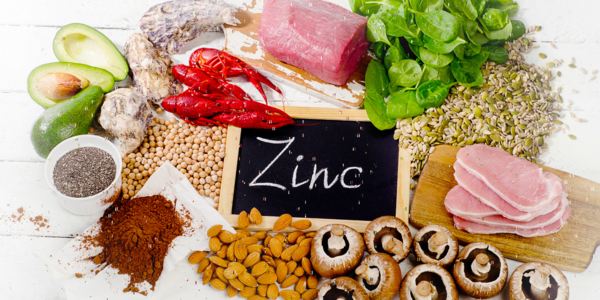





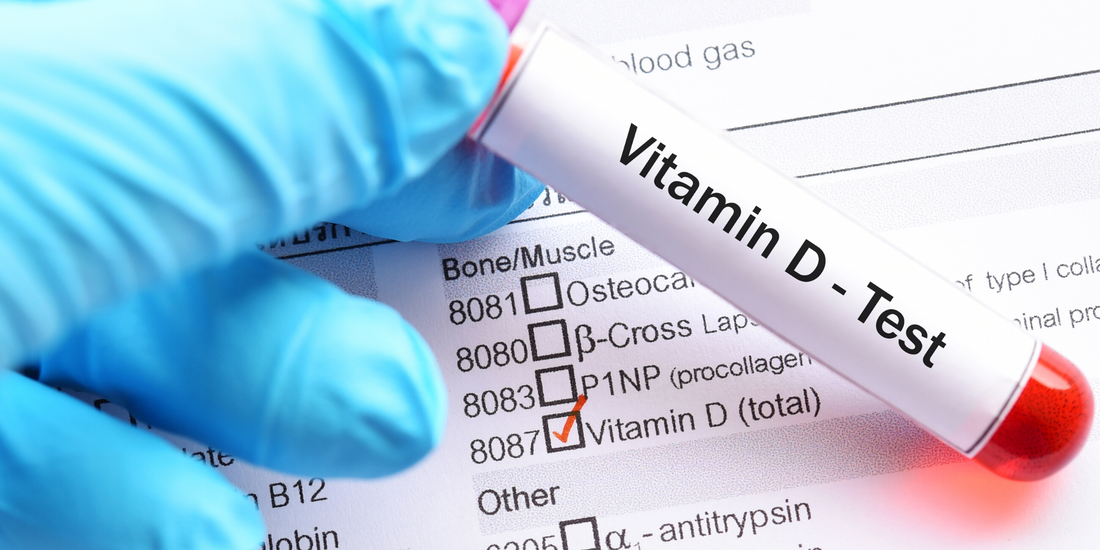


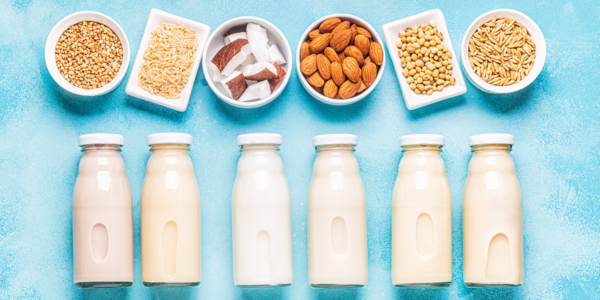

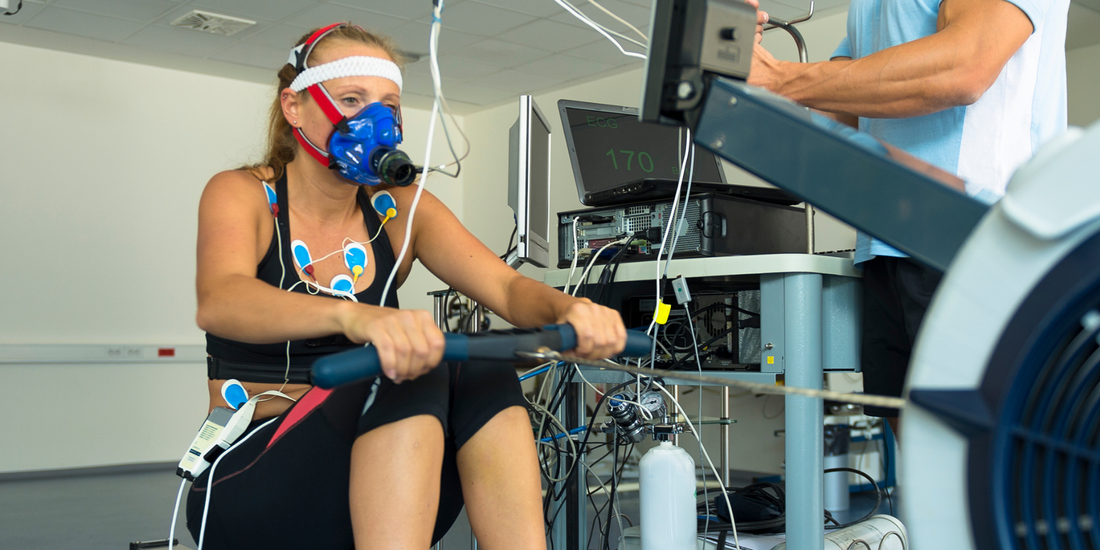





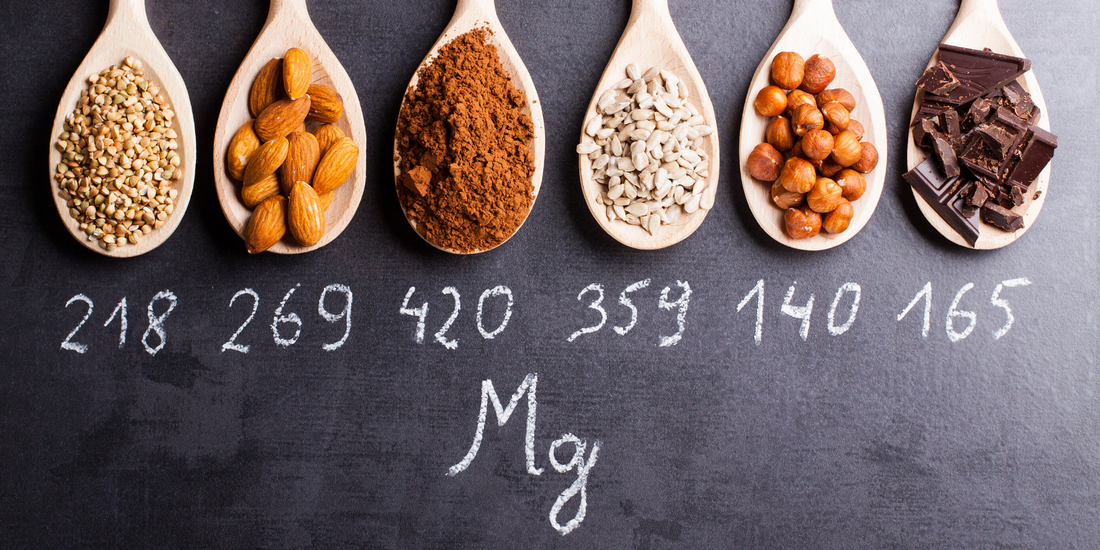
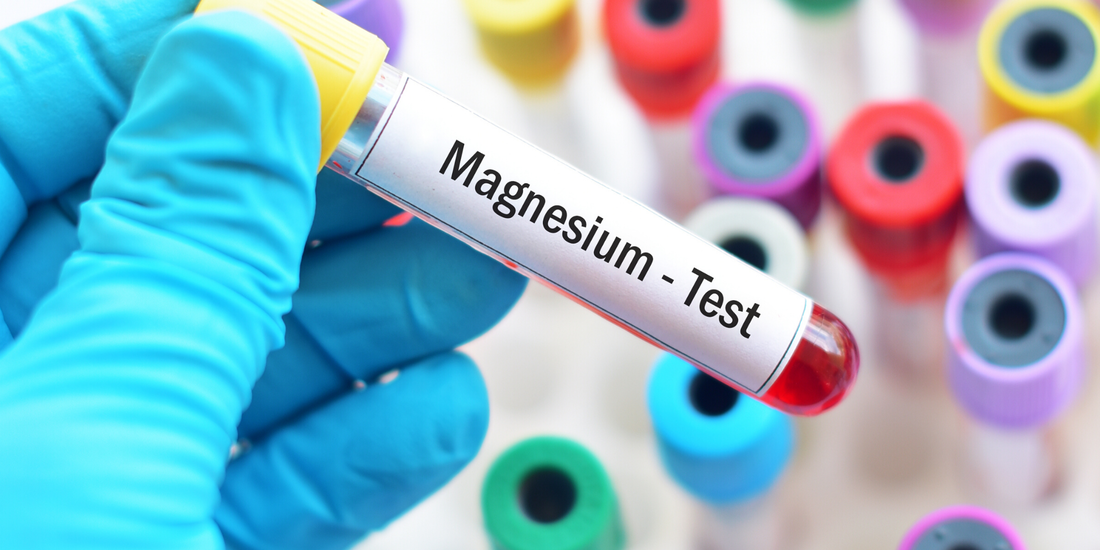



 RSS Feed
RSS Feed